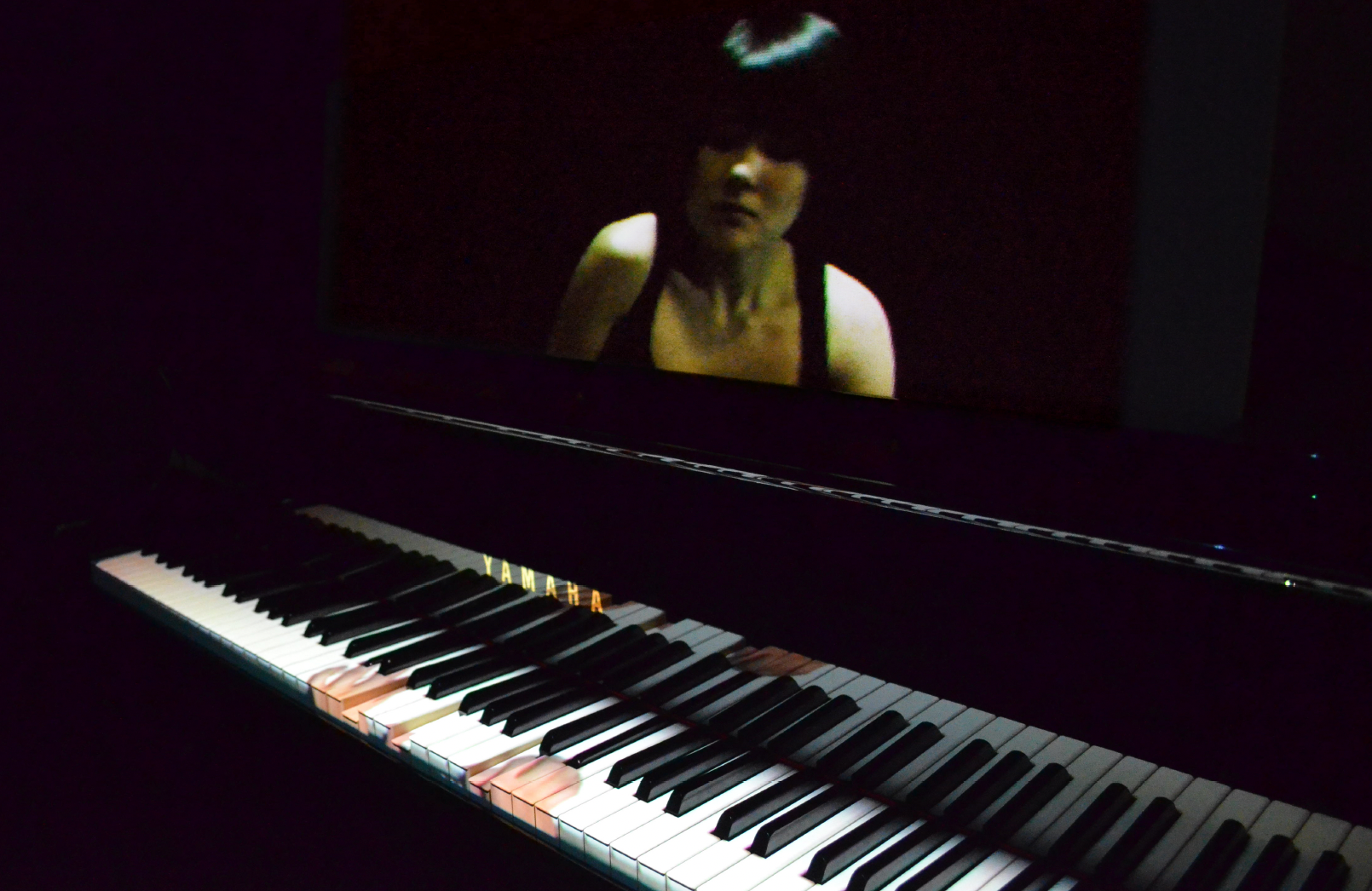

Upon reading about the examples of technologies that connect humans, some projects by Hiroshi Ishii came to mind.
Part of his research focuses on TeleAbsence. The project inTouch explores interpersonal communication through tangible force-feedback.
It provides humans an opportunity to physically interact with a shared object even when far apart. Like Principle 7.5 - "Simple is Satisfying" outlines,
the simplicity of the interaction is the beauty of this project. The wood cylinders rotating under your palm makes you feel the ghostly presence of another human.
Unlike Ocarina and Zephyr, this technology was developed to connect people who are "Loved Ones". It is a subtle design that creates intimate interactions.
Another project by the MIT Tangible Media Lab that I want to share is MirrorFugue, a project
that allows playing the piano with someone that is physically absent but virtually present. To create this shared musical experience, a pre-recorded video of the absent pianist is presented to the
physically present player by moving keys and a projection of the absent player’s hands and upper body onto the surface of the piano.


Both projects are authentic and created for the wellbeing of humans. Principle 7.3 - "Technology should strive to get out of the way of human interaction" is an interesting thesis to compare the two projects to.
The principle establishes that the more familiar the relationship, the less the technology should be visible and should not influence the interaction. Both projects inTouch and MirrorFugue are designed for humans
to interact with them in a specific way. They constrain the interaction to rolling your hand over wood cylinders or playing the piano alongside a ghost pianist. The design is visible and both
social interactions were designed for familiar relationships. I would argue that even though they afford a very specific interaction with loved ones they are still rich in meaning and high in social quality.
They create a unique social interaction that would not have been possible without technology. I agree that the design of a screen-based social technology like a video call app should get out of the way.
Virtual-social interaction through tangible objects, however, need to be more designed as they are specific to the physicality and functionality of a certain object like a piano and thus afford a virtual technology to
build on that interaction which is inherent to the object itself.
Tangible and non-tangible social interactions alike should be built to enrich our human nature. However, social networks today leave us feeling self-conscious and anxious. Monetization of user data has
been the main goal of the design of social platforms. 97% of Meta's revenue
stems from user data monetization for targeted advertisement. This kind of social technology is so misaligned with the meaningful designs of Ocarina or inTouch.
It makes me question whether social networks can ever be authentic and meaningful? It also brings up the questions of financial viability. How can we build social technology
companies that create enough revenue to sustain themselves while providing products that foster authenticity and well-being?